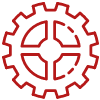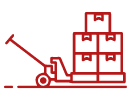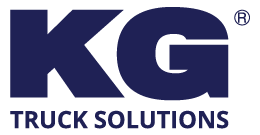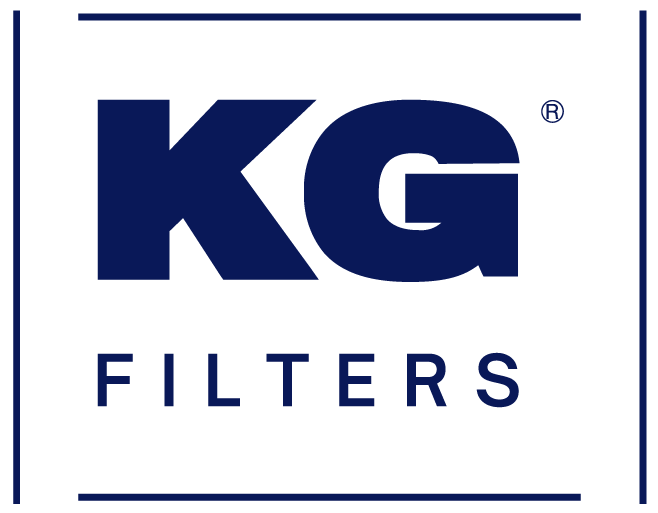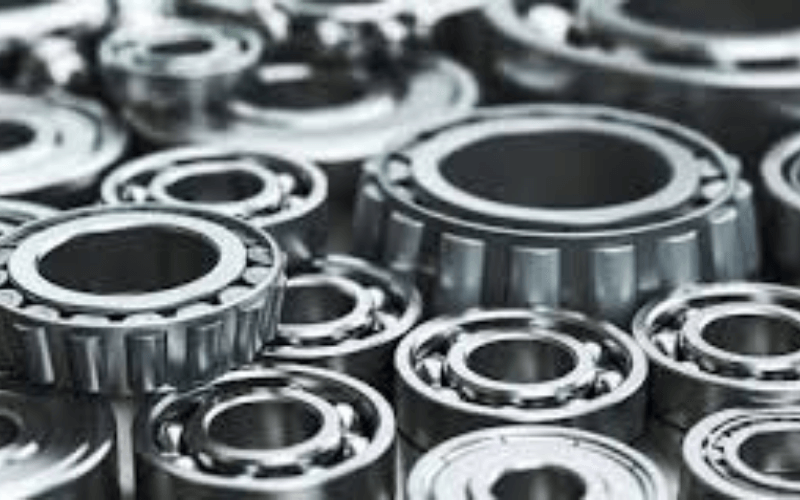Thrust bearings, a pivotal element in various machinery, play a crucial role in managing axial loads, ensuring smooth and efficient operation. These specialized bearings are meticulously designed to support predominantly axial (thrust) loads, and their classification is primarily based on the type of rolling elements they incorporate. Today, we will discuss thrust bearings, exploring their types, characteristics, and applications.
Understanding Thrust Bearings
In the world of bearings, thrust ball bearings stand out for their unique ability to support axial loads, which are perpendicular to the shaft. The rolling elements are the heart of these bearings, which are arranged meticulously between a set of washers (a shaft washer and a housing washer), maintaining a contact angle of 90°. Depending on the type of rolling elements used, thrust bearings are classified into:
- Thrust Ball Bearings
- Thrust Cylindrical Roller Bearings
- Thrust Spherical Roller Bearings
Thrust Ball Bearings: Managing Axial Loads with Precision
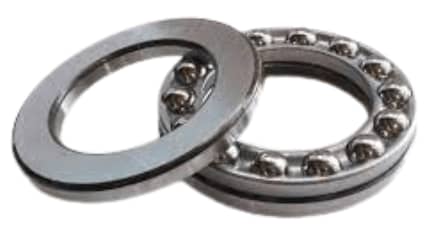 Thrust ball bearings, composed of bearing balls supported in a ring, are separable axial bearings available in single and double-direction acting designs.
Thrust ball bearings, composed of bearing balls supported in a ring, are separable axial bearings available in single and double-direction acting designs.
These bearings are particularly adept at accommodating high axial loads, albeit they must be shielded from any radial forces. Here’s a closer look at their characteristics:
Load and Speed Management: Capable of carrying axial loads in one or two directions and suitable for low to medium load and speed applications.
Installation Ease: The bearing washers, seating, and cage and ball assemblies can be individually mounted, facilitating straightforward mounting or dismounting.
Operational Limitation: They require minimum axial loads for optimal function and do not compensate for misalignment.
Thrust Cylindrical Roller Bearings: Merging Simplicity and High Load Capacity
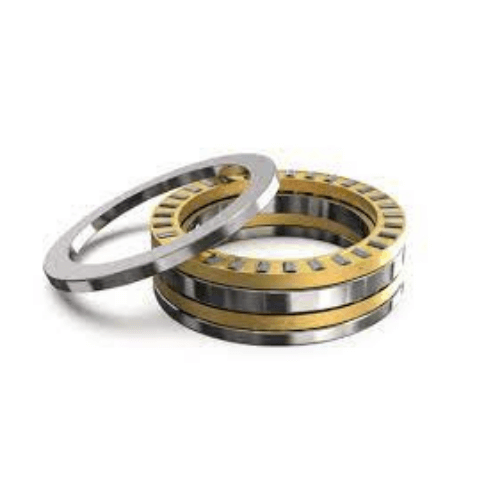
Thrust cylindrical roller bearings, consisting of cylindrical rollers, are celebrated for their insensitivity to shock loading and remarkable load-carrying capacity compared to their ball-bearing counterparts. These bearings accommodate very high axial loads but are not designed to manage radial forces. Key features include:
Design Simplicity: They boast a simple design, facilitating easy installation.
Load and Speed Suitability: Apt for medium and high load applications and medium-speed operations.
Rigidity: They offer a rigid bearing assembly, even when dealing with high-thrust loading in confined spaces.
Thrust Spherical Roller Bearings: Ensuring Self-Alignment and Robust Load Management
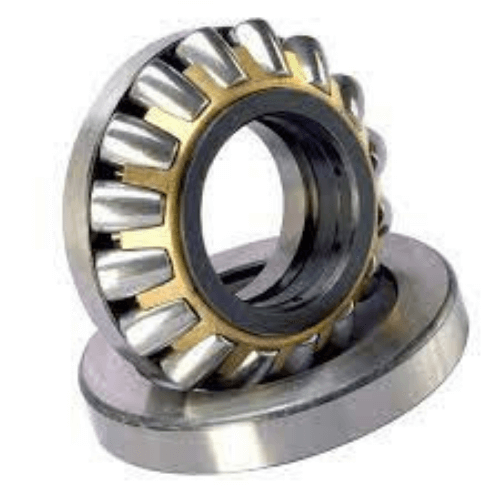
Thrust spherical roller bearings, incorporating asymmetrical rollers of spherical shape, are known for their self-aligning capability and immunity to mounting errors or shaft deflection. These bearings are characterized by:
Spherical Contour: The spherically contoured rollers, arranged steeply, manage high thrust loads and support moderate radial loads.
Low Friction: The bearing geometry and manufacturing technology ensure low friction during operation.
Self-Alignment: They internally self-align during operation, compensating for shaft deflections and housing distortions caused by shock or heavy loads.
KG International Strives to Provide Variety to Suit Your Needs
Our thrust bearings are available in various configurations to cater to multiple applications. Here’s a glimpse of our offerings:
- Thrust Ball Bearings: Ideal for applications requiring high-speed operation and minimal friction, thrust ball bearings utilize small balls to handle axial loads efficiently.
- Thrust Roller Bearings: In situations where heavier loads are involved, thrust roller bearings are the go-to choice. These bearings employ cylindrical rollers to distribute and support axial loads effectively.
- Spherical Roller Thrust Bearings: Designed to accommodate hefty axial or combined axial and radial loads, spherical roller thrust bearings are versatile and can handle challenging operating conditions.
- Tapered Roller Thrust Bearings: These bearings are engineered for applications where large thrust loads need to be managed. Tapered roller thrust bearings are characterized by their unique sharp design, which ensures efficient load distribution.
- Needle Roller Thrust Bearings: Offering excellent axial load-carrying capability within a small footprint, needle roller thrust bearings are often used in applications with limited available space.
The Pivotal Role of Thrust Bearings in Various Applications
Thrust bearings, with their diverse types and specific characteristics, find applications across various industries, ensuring machinery and equipment operate smoothly by adeptly managing axial loads. From the precision and ease of thrust ball bearings to the high load capacity of thrust cylindrical roller bearings and the self-aligning capability of thrust spherical roller bearings, each type brings unique advantages, catering to different industrial needs and applications.
Understanding the nuances of these bearings, from their design to their operational capabilities, is pivotal for engineers and professionals in selecting the correct bearing for their specific application, ensuring longevity and optimal performance of the machinery they are incorporated into.
Precision Engineering for Performance
Our commitment to precision engineering sets KG International’s thrust bearings apart. We understand that these components play a critical role in machinery operation, where accuracy and reliability are paramount. Our thrust bearings are manufactured with meticulous attention to detail, employing high-quality materials and advanced manufacturing processes.
Also, Read The Role of Temperature control in maximising optimal operating conditions for bearing.
KG International: Your Trusted Partner
At KG International, we recognize the significance of thrust bearings in industrial applications. They are the silent forces that ensure the integrity and efficiency of your machinery. With our diverse range of thrust bearings, we cater to industries as varied as automotive, aerospace, manufacturing, and more. We are committed to offering solutions that meet your specific requirements, whether high-speed precision or heavy-duty performance.
Our dedication to quality and performance has made us a valuable partner for businesses across the globe. When you choose KG International, you’re choosing precision, durability, and a partner that understands the unique demands of your industry.
In conclusion, our thrust bearings are designed to meet the challenges of modern industrial machinery. With a wide variety of options and a commitment to precision engineering, we empower your machinery to perform with accuracy and efficiency, ensuring the success of your operations.





